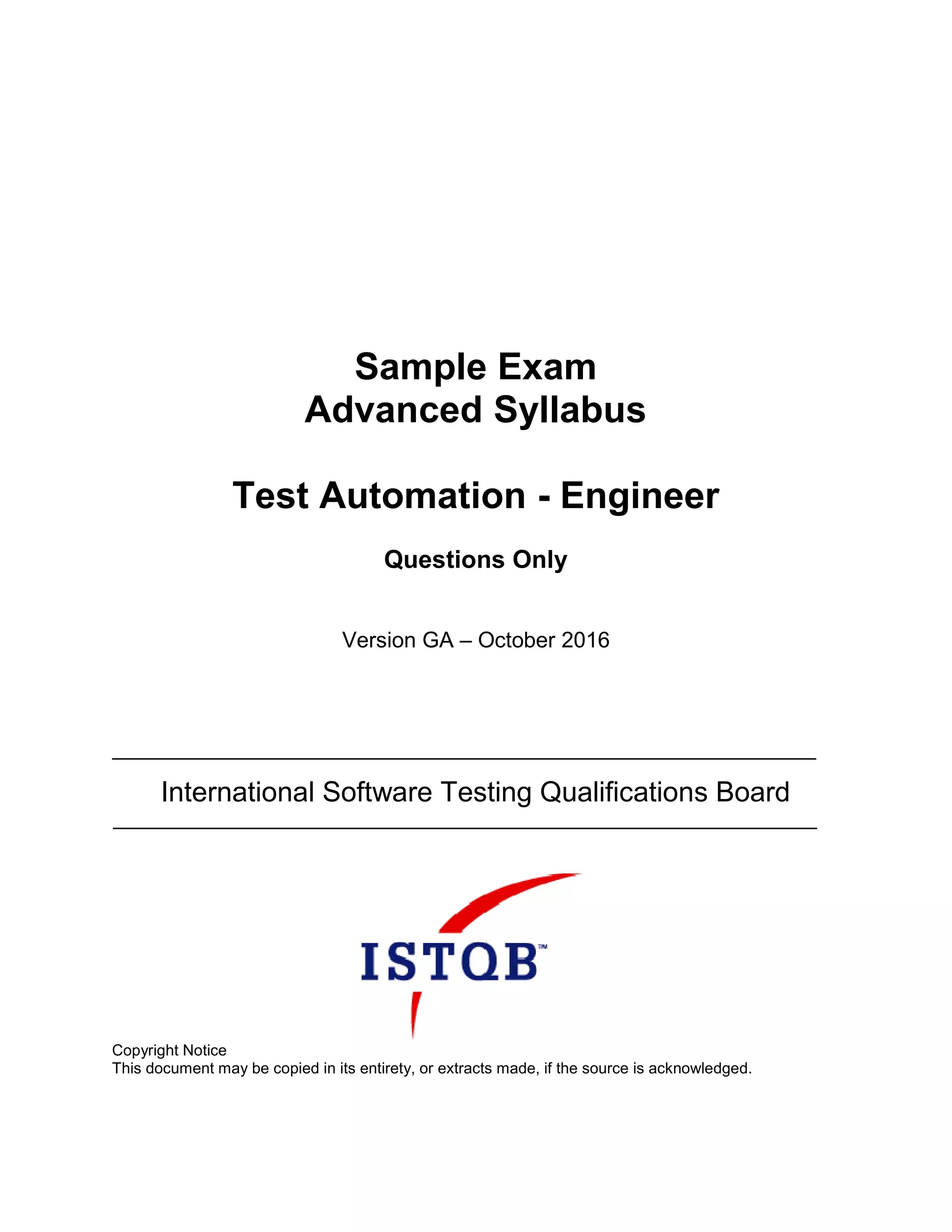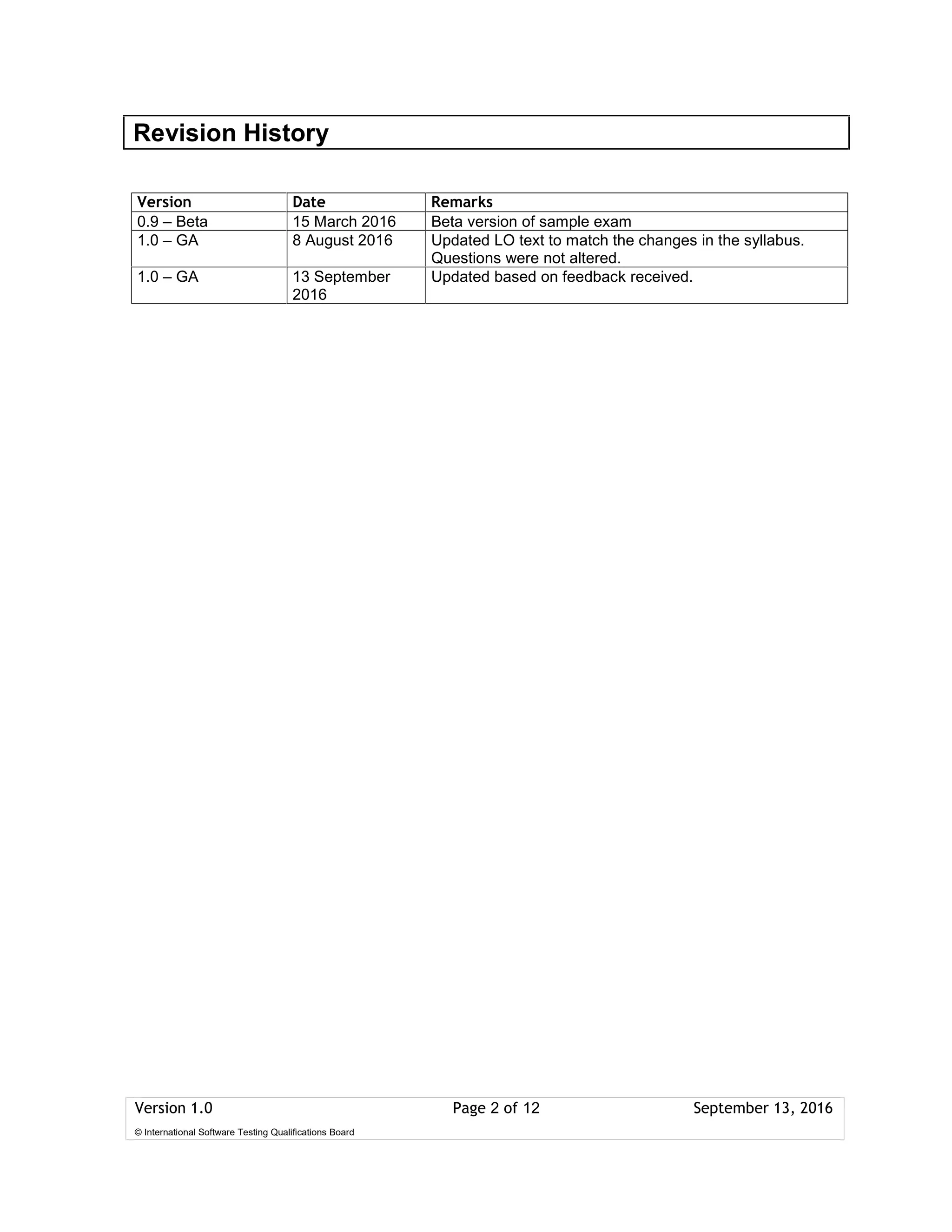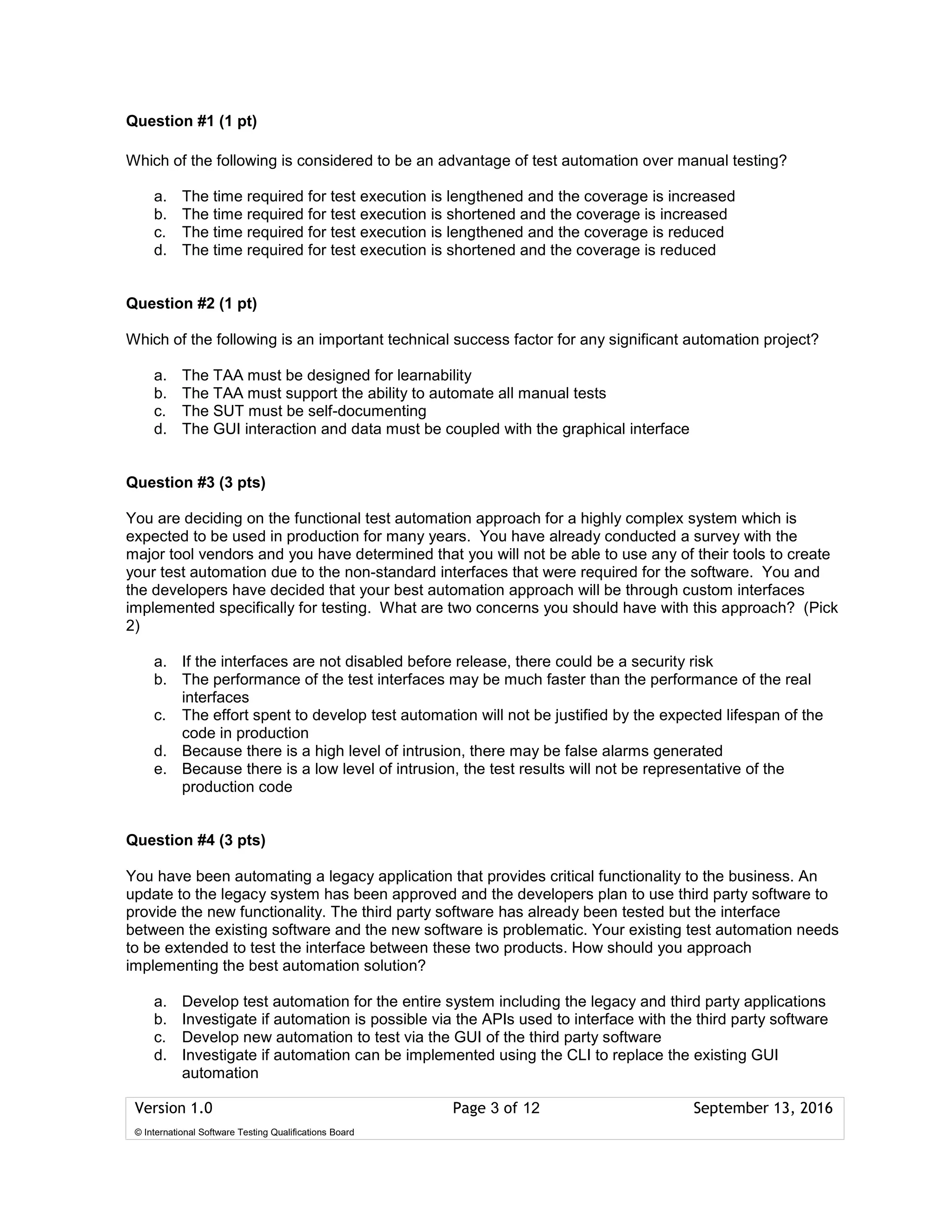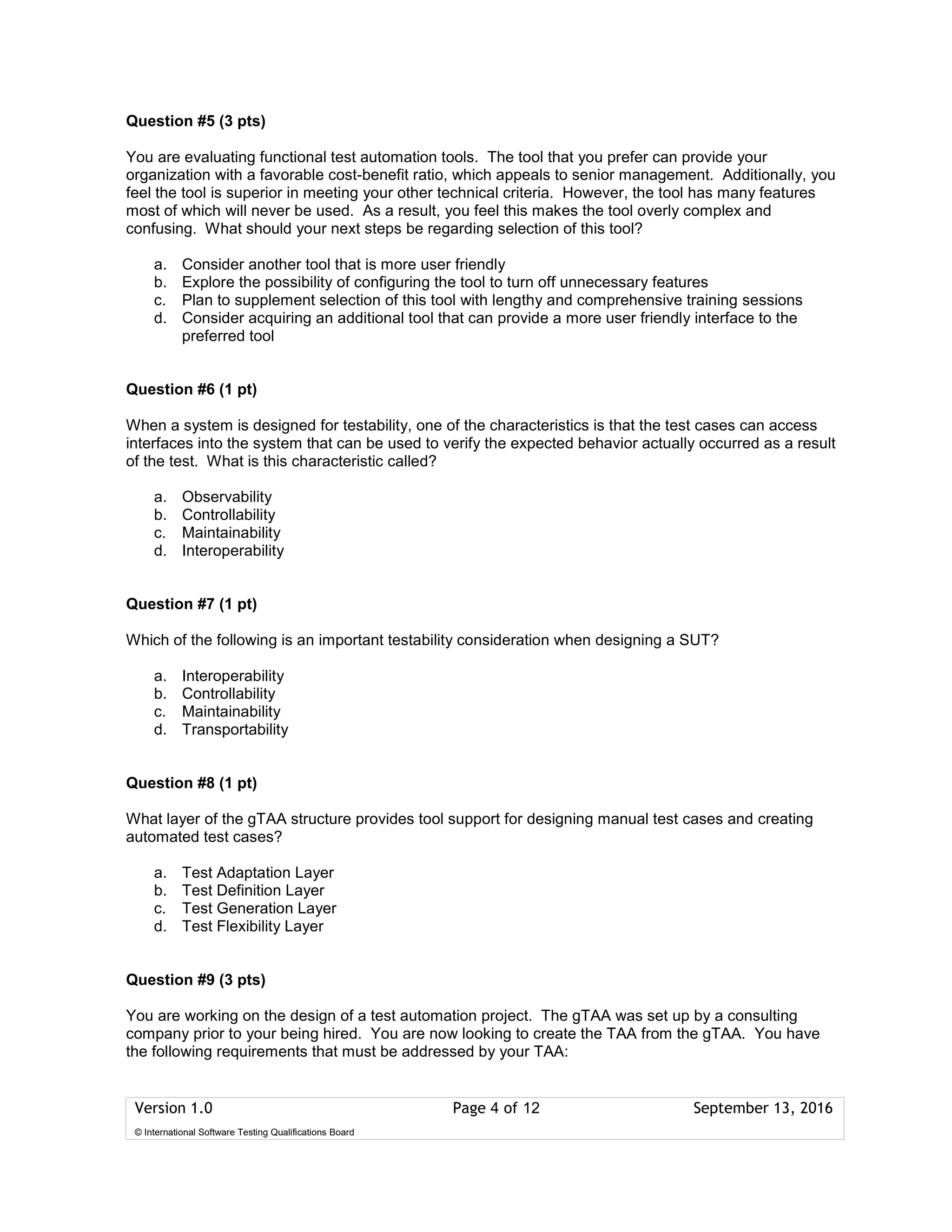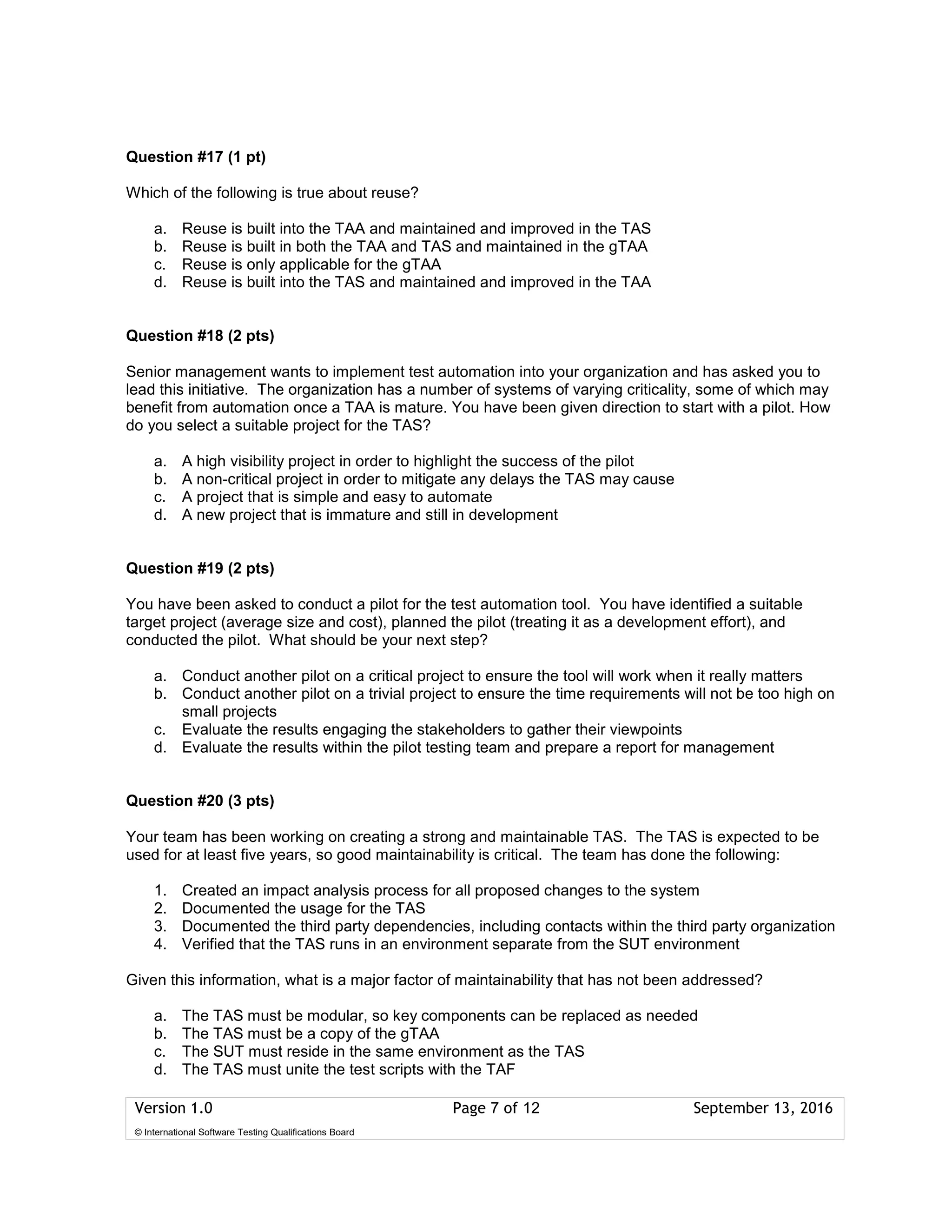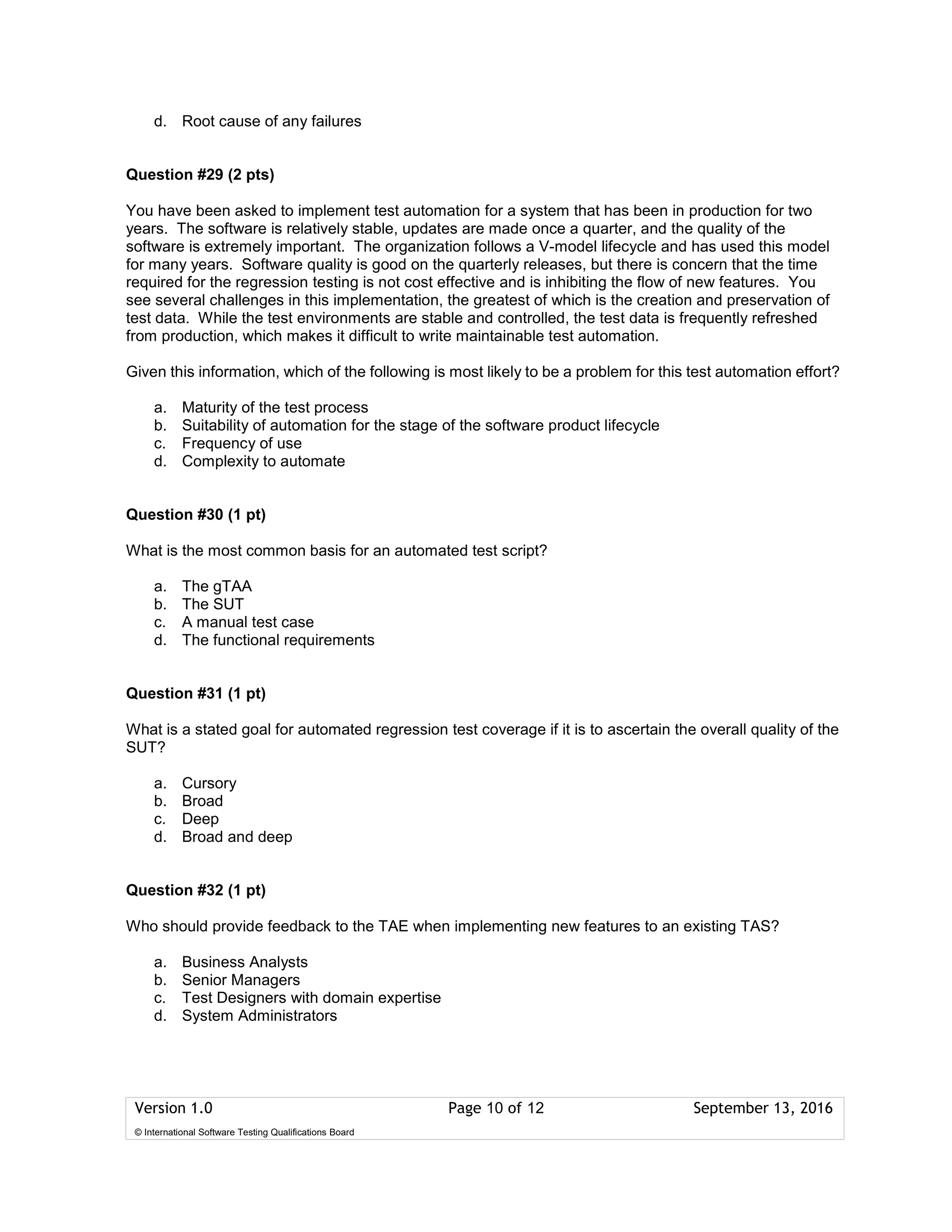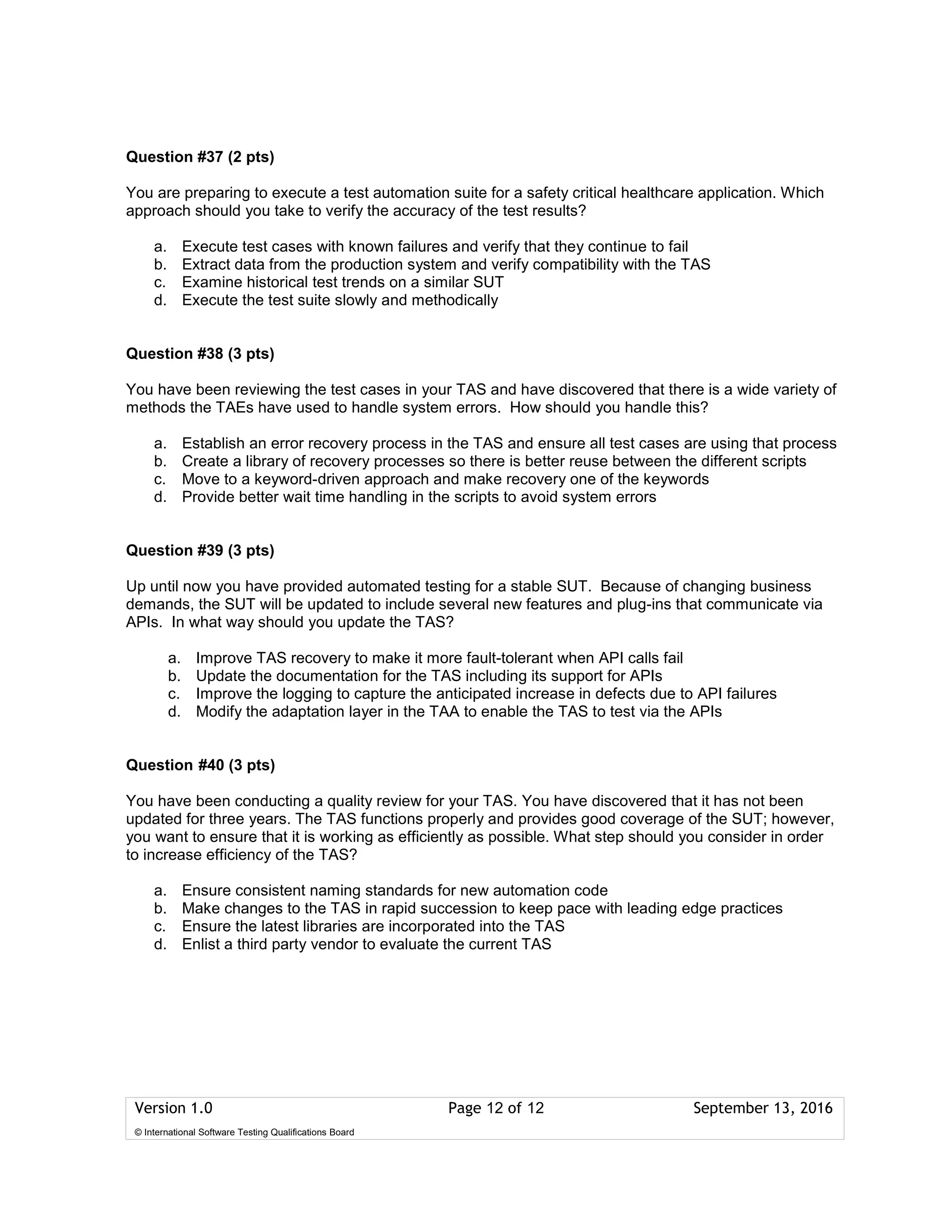The document is a sample exam for test automation engineers created by the International Software Testing Qualifications Board. It includes questions on various aspects of test automation, including best practices, technical considerations, and design principles. The exam aims to assess knowledge and skills relevant to implementing effective test automation strategies.
